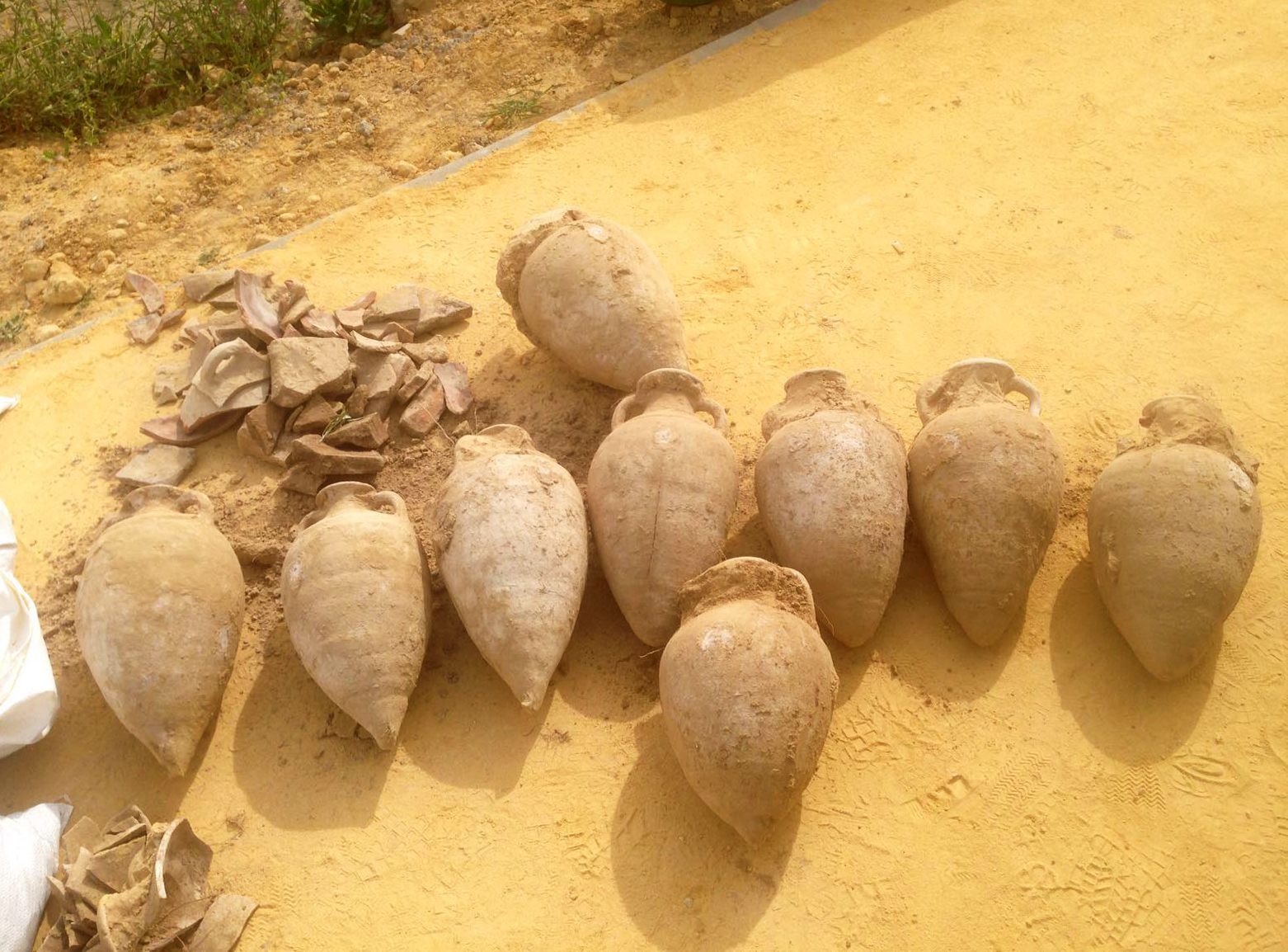Ty kjávo, tomu říkám pořádnej poklad... 👍🙈🤣 kam se hrabu se svýma 350ti pléškama... 😁
Mystery of the largest hoard of Roman coins revealed
Categories: Nálezy nejenom s detektorem v západní Evropě
On 27 April 2016, 19 large amphorae containing tens of thousands of Roman coins were accidentally discovered during construction work in Tomares, a suburb of Seville. Ten amphoras were damaged by a heavy excavator, while the remaining nine remained intact. News of Spain's greatest Roman treasure has travelled around the world. Now, for the first time, the results of the research have been published.
A group of archaeologists and experts from the University of Seville have published a report concluding that the 19 amphorae contained some 53,000 coinsthat were stored under the floor of a now-defunct Roman villa, and that they were all minted between 294 and 311 AD. The study also analysed the possible reasons why the original owner hid them.
After the discovery, the amphoras and coins were immediately taken to the Provincial Archaeological Museum of Seville, where the nine unbroken amphoras (which remain unopened) were numbered from 1 to 9, and the broken ones with coins were numbered 10 and 11. The remaining eight broken vessels with the contents spilled in the excavation (a total of 22,288 coins) were given the name 'regular set'. After recovery, the experts returned to the site and retrieved a further 102 coins.
El Zaudín, in the province of El Aljarafe, is a plateau about 100 meters high overlooking the landscape of Guadalquivir. The geographical location and surroundings make this region an area that has been inhabited since the Eneolithic period. Archaeological research has revealed the remains of a Roman building dating from between the 3rd and 4th centuries. Parts of the walls and supporting pillars bore the characteristic elements of a granary.
The beginning of the building was dated to the 1st century, its abandonment to the 4th century, when the treasure was hidden under the floor. 200 years later, the building was dismantled and the material recycled for other buildings, without anyone noticing the treasure under their feet. Experts believe the warehouse was part of a Roman villa, an agro-foodcomplex, where, as well as aristocratic residences, there were also buildings for food production or storage and workers' living quarters.
Archaeologists assume that all the amphorae contain a similar number of coins. Broken amphorae 10 and 11 each contain 2 800 coins of the same type and alloy. Since all the amphoras are the same size, the researchers estimate that they contain a total of 53,000 coins. These coins were issued after Emperor Diocletian's reforms in 294 (fiscal, administrative and monetary changes to curb inflation), with none going back further than 312.
As the experts had only the 'ordinary collection', i.e. the coins scattered in the excavation, for analysis, they selected 3,000 pieces, to which they added 102 pieces from the hoard and 2,798 coins from the broken amphora 11 - in total about 10% of the hoard. The report from the University of Seville explains that this was "a sufficient and reliable percentage to make some preliminary observations about the composition of the sample that can be extrapolated to the whole assemblage".
Microcameras were introduced into amphorae 10 and 11, confirming that the vessels were full to the neck with coins. The fact that there is no chronological ordering between the layers of coins (on the contrary, some of the deeper layers are filled with more recent coins) confirms that all the coins were placed in the amphorae at the same time.
The 5,899 coins analysed were minted under the emperors Diocletian, Maximian, Galerius, Constantine I, Septimius Severus, Maximinus, Licinius and Maxentius. They came from the mints of Rome, Carthage, Aquileia, Treveris, Ticinum, Lugdunum, Londinium, Siscia and Ostia. A smaller number of coins came from Alexandria, Cyzicus, Thessalonica, Heraclea, Nicomedia and Antioch. The largest number of coins are coins struck by Diocletian from the mint of Carthage.
The collection contains more coins from the Diocletian era than from any other time period. Perhaps this is because the weight of the coins and the percentage of silver declined with rising inflation. In 294, 32 coins were struck from a pound of silver; by 307 this figure had risen to 40; between 307 and 309, a pound of silver went to produce 48 coins; and between 310 and 311 this figure climbed to 72. In other words, the owner of the hoard preferred to accumulate Diocletian's coins with a higher silver content.
Archaeologists further explain that Diocletian's reform caused "political uncertainty and conflicts between rulers". This was compounded by territorial and social conflicts, which gradually led to the concentration of wealth and the devaluation of the currency against gold. "These and other factors explain the large number of coins (in a single depot) because only in large numbers could payments of a certain level be made." Huge quantities of coins were needed to carry out any important financial transaction. Even more so if you owned a villa that functioned as an agri-food center.
The Tomares hoard is one of the largest coin sets from the Tetrarchy period in the entire Imperial territory: "In size, it is surpassed only by Misurata in Libya. It represents a superb testimony to the monetary circulation in the early 4th century AD in the south of the Iberian Peninsula. Its composition is also an excellent archive in which to study the vicissitudes of the economic policies of the emperors of the Tetrarchy, a time when currency manipulation was an important economic resource in the hands of state officials."
Video
Roman Nemec
Sources: elpais.com, thehistoryblog.com, washingtonpost.com

The amphorae were full of Roman coins

The largest Roman treasure trove in the entire empire

Sorting and identification

Amphorae in situ
The article is included in categories:








